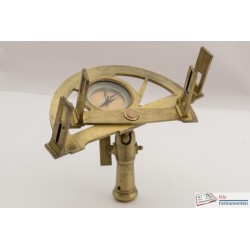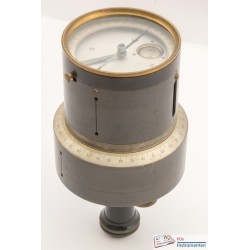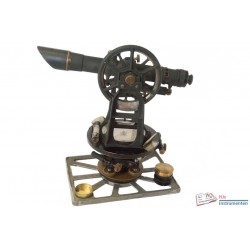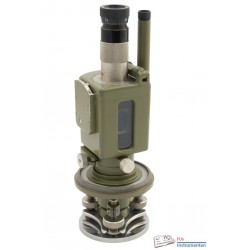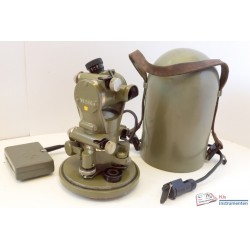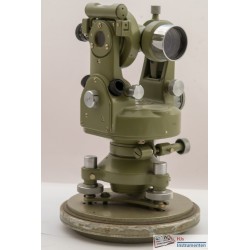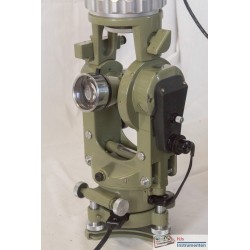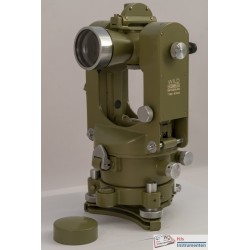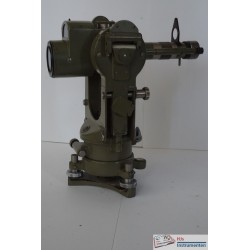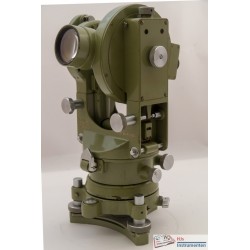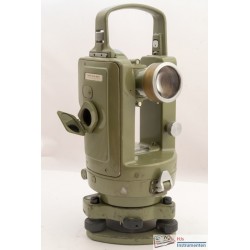Theodolite
The theodolite is used for measuring directions, either horizontally or vertically. The vertical circle has a level attached to allow it to be set to zero when exactly level. The horizontal circle is set to zero at an arbitrary direction and from this zero all other directions are measured. Orginally the circles were made of metal but on most instruments in my collection the circles are made of glass and finely engraved.
Theodolites in my collection can be divided into:
- Optical theodolites using microscopes to read the circles
- Electronic theodolites (sometimes combined with a EDM to measure distances) where the circles are read digitally
- Boussole theodolite which uses a compass to determine local magnetic north and reference directions to that.
- Self reducing tachymeters that measure both the horizontal angle as well as the vertical angle and, together with a special staff, allow the direct reading of height differences and distances
Subcategories
-
Simple theodolite
The simple theodolite only measures horizontal angles. It is one of the earliest forms of theodolites and can today still be found as the horizontal circle of many leveling instruments.
-
Optical theodolite
Theodolite that uses a microscope (or direct visual reading) to read the circle(s). They measure the horizontal and vertical angle (seperately). Most of my theodolites are from Wild Heerbrugg and use glass circles and optical microscopes for reading the angles.
-
Digital theodolites
Theodolite that uses a digital sensor to measure the horizontal and vertical angles and display them on the instrument. Can often be combined with a EDM to measure distances. The electronics than allow the reduction of slant range to a horizontal / vertical distance making them electronic tachymeters. The horizontal and vertical angles are always measured at the same time although some instruments can not display both of them at the same time. Most instruments in my collection are by Wild Heerbrugg.
-
Boussole theodolite
Theodolite that uses a magnetic compass to reference the measured directions to magnetic north. There are two type of boussole theodolites; those with a full compass that can be set up in any direction and those with a box compass that must be set up pointing to magnetic north.
In the United States and early in Europe all theodolites were boussole instrument in that they used a magnetic compass. The US instrument is called a Transit in the United States whereas the European instrument is called a theodolite. I have classed the military goniometer also as a Boussole instrument as it has a box compass.
Most of my Boussole instruments are from Wild Heerbrugg.
-
Tachymeter
The tachymeter can be used to measure both angles as well as horizontal and vertical distances. Depending on whether it is an optical or electronic tachymeter a special staff or prism is required. The optical type uses an elaborate system to convert the measured distance difference on a staff into a horizontal and vertical distance (height) without having to perform angular computations. In the digital type the values are read directly from the displays and as such the digital tachymeter is the forebear of the (integrated) total station instrument in land surveying. Most of the instruments in my collection are from Wild Heerbrugg.

